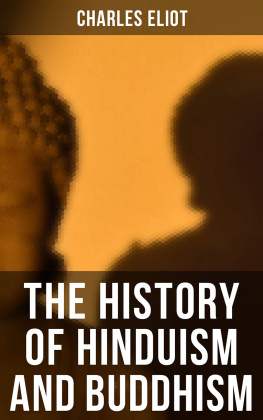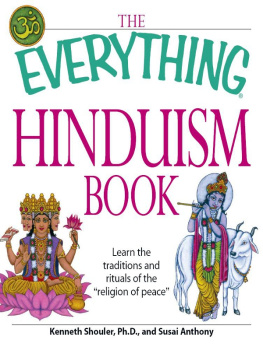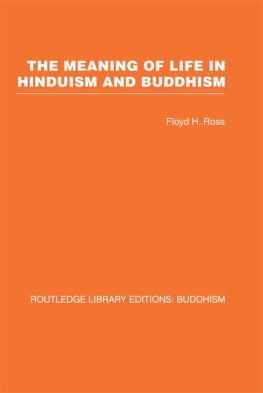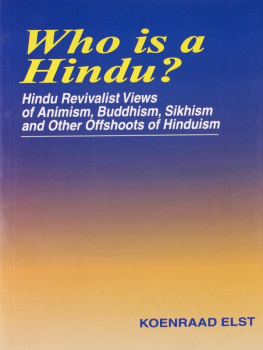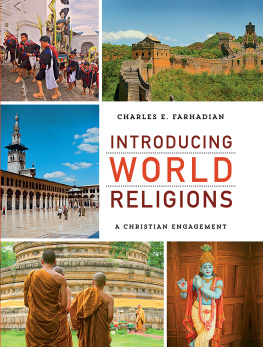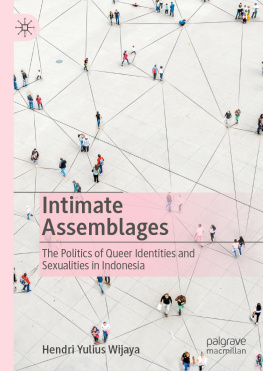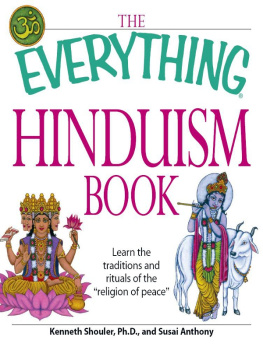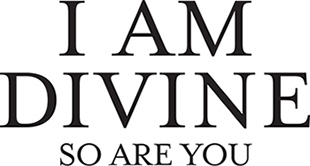
How Buddhism, Jainism, Sikhism and Hinduism affirm the dignity of queer identities and sexualities
Introduced by
DEVDUTT PATTANAIK
Edited by
JERRY JOHNSON
Co-editors
Revd Loraine Tulleken & Revd J.P. Mokgethi-Heath
Contributors
Devdutt Pattanaik
Jerry Johnson
Sukhdeep Singh
Sachin Jain
Vivek Tejuja
Dr Meera Baindur

Purush napunsaka nari va jiva charachara koi, sarva bhaav bhaja kapat taji mohi param priya soi.
Men, queers, women, animals or plants any and all who approach me after abandoning malice are beloved to me.
Tulsi Ramcharitmanas (7.87ka)
Contents
The intention of this book is to offer a personal perspective on how faiths based on the principle of karma such as Hinduism, Buddhism, Jainism and Sikhism can affirm the dignity of queer individuals. Karmic faiths reveal their theology not through authoritative books but through the individual cogitations of wise sages, rituals in important ceremonies, and through the practices of the laity. This book identifies a few of these practices, rituals and cogitations running across these faiths to articulate the manner in which they can be seen as lending comfort to the lives of queer people. This book does not intend to function as a philosophical treatise or a theological work of doctrine on these faiths. It does not intend to replace the voices of authority in the respective faiths or religions.
This book does not claim to be academic, authoritative, comprehensive or definitive, but seeks to draw attention to the compassionate possibilities of Karmic faiths. The treatment of the topics herein is for a general reader interested in matters of faith, culture, diversity and queer issues, without requiring expertise or in-depth knowledge in any of these areas.
The interpretations presented in this book are not intended to be prescriptive or critical. The authors of this book have more than a casual interest in matters related to faith, philosophy and theology as a guide to better living and have sought to share their personal opinions on the matter with the general public.
I am divine.
Aham Brahmasmi.
Vedic Sanskrit. Brihadaranyaka Upanishad, 1.4.10. 800 BCE
So are you.
Tat Tvam Asi, which literally translates as, Thats who you are.
Vedic Sanskrit. Chandogya Upanishad, 6.8.7. 800 BCE
Brahman means the expanding human possibility, identified variously as mind, consciousness, imagination, intelligence, self or divinity in every living being. In later Hindu thought, brahman is identified with atma, or individual soul, and visualised as God. Buddhists did not accept the idea of a permanent soul, or God. Jains accepted the idea of permanent soul, distinct for distinct beings, but not God. Sikhs speak of individual souls (jiva-atma) separated as drops of water from the ocean, which is divinity, the cosmic soul (param-atma).
Note: Brahman is to be distinguished from brahmin, which is a Hindu caste; from Brahma, name of the creator god in Hindu mythology; and from brahmana, Vedic ritual manuals.

The cover image shows an 8th century carving of Ardhanareshvara, God as half-woman and half-man, at the Elephanta Caves, Gharapuri island, near Mumbai, India. This is a recurring motif in Hindu art. The male half embodies the mind. The female half embodies matter. This iconography also hints at the male and female principles of divinity present in all living organisms. It evokes equality of the gender binaries as well as a comfortable fluidity between the binaries, lending space to queer identities.
Sexual orientation is an individuals enduring romantic, emotional or sexual attraction towards other persons. For example, heterosexual, bisexual and homosexual orientations range from exclusively heterosexual to exclusive homosexuality.
Gender identity is ones sense of self as a woman, man or transgender. This may or may not conform to the persons biological sex.
Gender expression is the outward expression of gender by, for example, behaviour, clothing, hairstyle, voice and body language.
In this book we predominantly speak of LGBT and LGBTI, but other related acronyms are LGBTIQ, SOGI or SSOGIE.
LGBT and LGBTI are people who define themselves as lesbian, gay, bisexual, transgender or intersex. It is a self-referential category.
Lesbian is a woman whose enduring physical, romantic, emotional and/or spiritual attraction is to other women. This does not imply any same-sex sexual expression or activity.
Gay describes people (e.g. gay man, gay people) whose enduring physical, romantic, emotional and/or spiritual attraction is to people of the same sex. In contemporary contexts, lesbian is often a preferred term for women and gay for men. Again, this does not imply any same-sex sexual expression or activity.
Bisexual is an individual who is physically, romantically, emotionally and/or spiritually attracted to both men and women. A bisexual person may be more attracted to one sex than another and this may vary over time. This does not imply physical or sexual expressions with people of both or either gender, neither does it imply multiple relationships.
Trans, transgender, transsexual and transvestite are umbrella terms for people whose gender identity or gender expression differ from those of the sex they were assigned at birth. They may include but are not limited to: transsexuals, cross-dressers and other gender-variant people. Transgender people may identify as female-to-male (FTM) or male-to-female (MTF) and may or may not decide to alter their bodies hormonally or surgically.
Intersex (previously known as hermaphrodites) is an individual who has an atypical development of physical sex attributes. These may include but are not limited to external genitals that are not easily classified as male or female. Or there may be incomplete development of internal reproductive organs. Some intersex characteristics are recognised at birth. Others are delayed until puberty. The term disorders of sexual development (DSD) often refers to intersex conditions.
In the case of LGBTIQ, the Q refers to Queer or Questioning.
Queer is a political term for all of sexuality outside of heterosexuality. It is often self-selected by those who either object to or prefer a non-gender-specific term such as gay and lesbian. The term has also been used to quantify those who go against normal convention, so it is not necessarily attached to sexual orientation and/or gender identity.
Words such as napunsaka, kliba, pandaka, pedi, kinnara, and kothi in Indian languages (Sanskrit, Prakrit, Pali, Tamil and Hindi) conservatively refer to the third gender (i.e., in terms of body or physical characteristics) but can also be liberally translated to include sexualities (i.e., feelings or psychosexual characteristics) across the queer spectrum.
Questioning refers to a state of being unsure of your true sexual identity but being willing to examine what it may be. This does not imply sexual expression or experimentation.
SOGI means sexual orientation and gender identity. For a deeper understanding of SOGI, please refer to the Genderbread person. http://itspronouncedmetrosexual.com/2012/03/the-genderbread-person-v2-0/.
Next page


